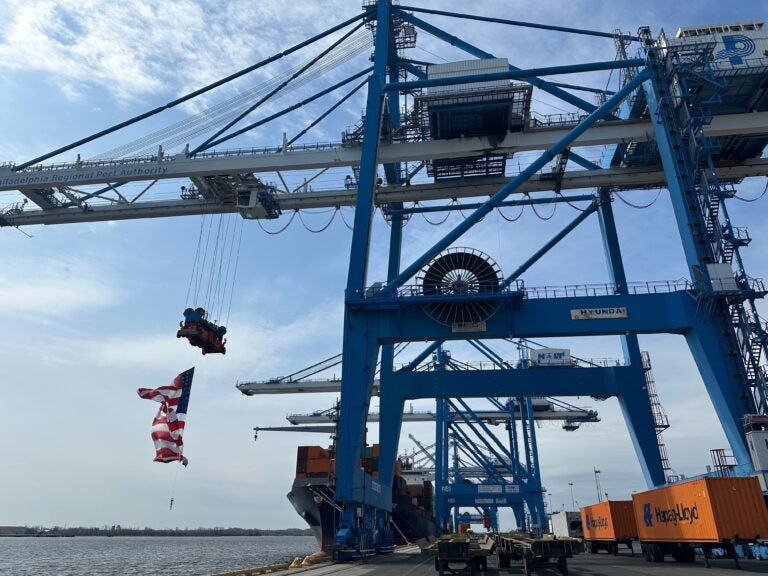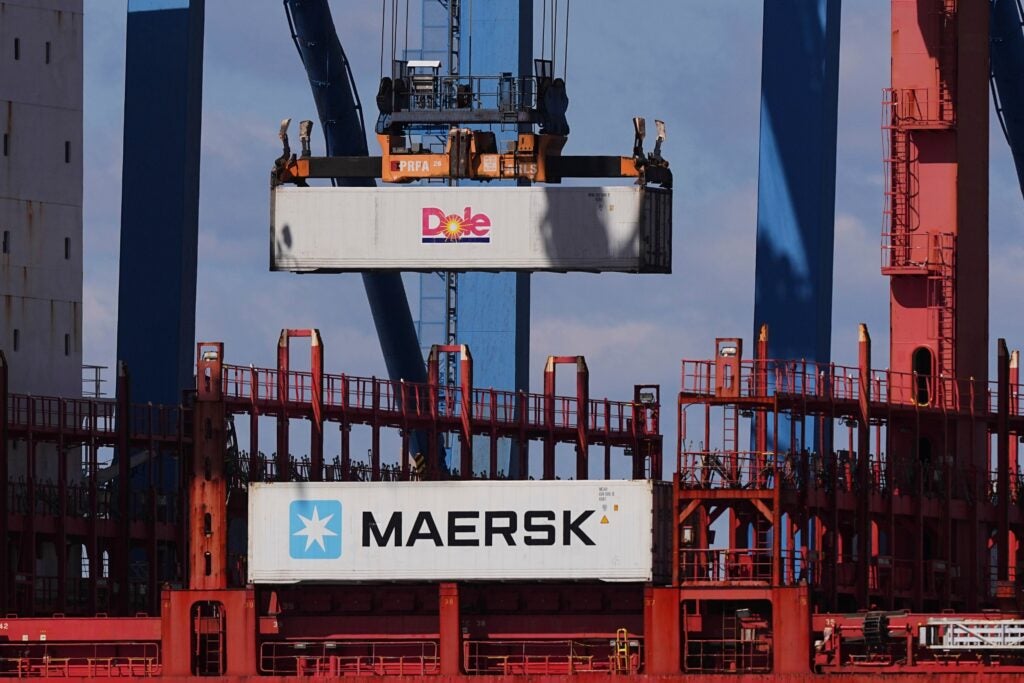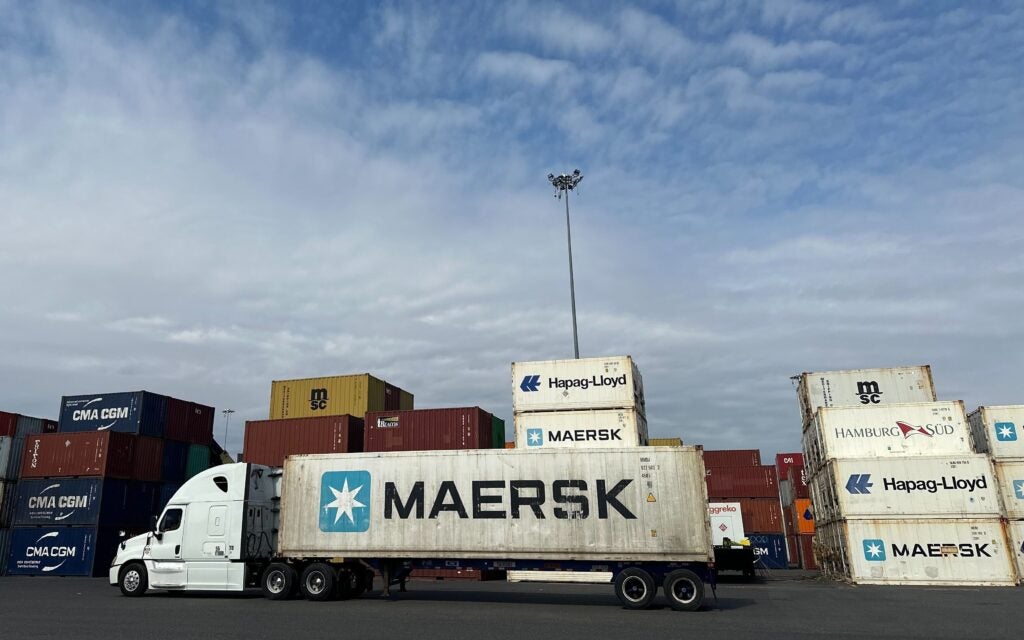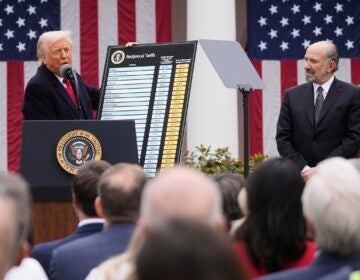PhilaPort handled $4.5B of imports from China in 2024. Officials worry Trump’s tariffs put that business at risk
Pennsylvania officials worry that President Donald Trump’s tariff policies are threatening global trade, local businesses, jobs and consumer affordability.
Listen 1:03
A container vessel was being unloaded at PhilaPort on April 10, after President Donald Trump increased import tariffs to 145% for all goods from China. (Kristen Mosbrucker-Garza/WHYY)
From Philly and the Pa. suburbs to South Jersey and Delaware, what would you like WHYY News to cover? Let us know!
A global trade war sparked by President Donald Trump’s tariff policy is raising the alarms of officials at the Port of Philadelphia, aka PhilaPort, who worry that a slowdown in container traffic could ripple through the region’s economy.
Pennsylvania Gov. Josh Shapiro toured the port Thursday to hear from businesses about the potential impact from the tariffs.
“I’ve heard from a lot of businesses that are wondering if they’re going to get their shipments,” Shapiro said, “or are getting notices from suppliers that the materials or products that they were counting on are no longer going to be able to come or are going to cost a whole lot more.”
Container volume at PhilaPort has risen steadily over the past decade. In 2024, the port handled 841,000 shipping container units, an increase of 13% compared to 2023.
Much of that uptick in trade stems from Central and South America as companies imported $694 million worth of fruits and nuts from Colombia, Costa Rica and Guatemala in 2024, U.S. Census data shows.

PhilaPort Chairman Michael Pearson said that the port handles fruits, vegetables, televisions, furniture, prescription drugs and vehicles.
“Products we all rely on in daily life. The port is not only critical to our city, it is the entire state that benefits from this activity,” Pearson said. “The supply chain is delicate, however. And we must do all we can to preserve the jobs we have.”
There’s about 12,000 workers supported by PhilaPort, many of whom are unionized through the International Longshoremen’s Association.
But now, there’s a 10% tariff on imports from most countries – and a whopping 145% tariff on goods from China.
Just last year, companies at PhilaPort imported $4.5 billion from China, but exported just $406 million, which means there’s a trade deficit.

Trump argued in an executive order that the goal of the tariffs is to bring back U.S. manufacturing and force other countries to negotiate new trade deals.
“Increased reliance on foreign producers for goods also has compromised U.S. economic security by rendering U.S. supply chains vulnerable to geopolitical disruption and supply shocks,” he wrote in an April 2 executive order.
For example, Trump initially imposed a 46% tariff on imports from Vietnam, a popular country for companies looking to shift operations out of China. Those tariffs have since been reduced to 10% after the two nations began renegotiating.
Companies inside PhilaPort imported $71 million worth of commodities from Vietnam in 2024, compared to exporting $11 million to Vietnam from Philadelphia.
Shapiro said there’s been widespread confusion in the market because the tariffs have changed so rapidly forcing near-term decisions with long-term implications.
“Certainly we need more trade balance in the world and in this country,” Shapiro said. “But what the president has done here is injected chaos and increased prices on Pennsylvania consumers. That’s not the answer.”

Get daily updates from WHYY News!
WHYY is your source for fact-based, in-depth journalism and information. As a nonprofit organization, we rely on financial support from readers like you. Please give today.







